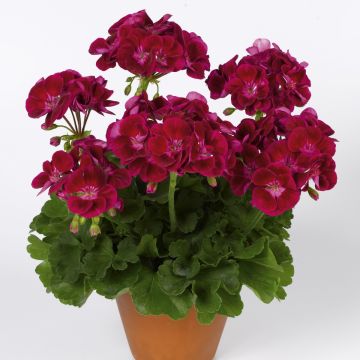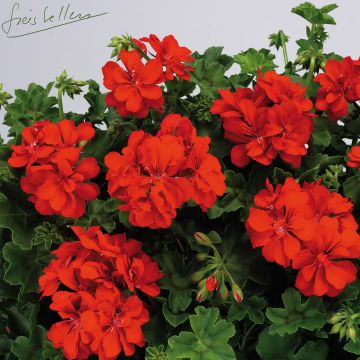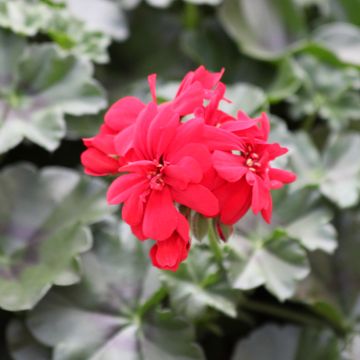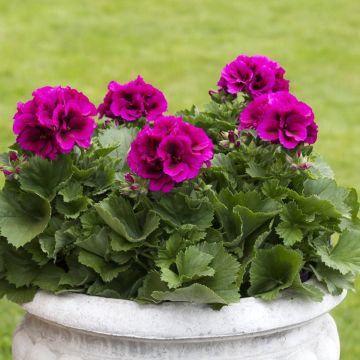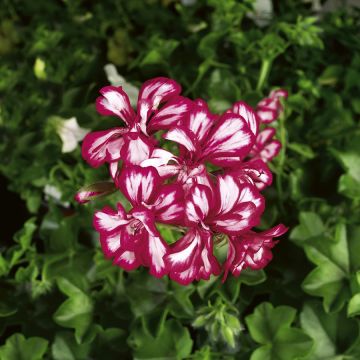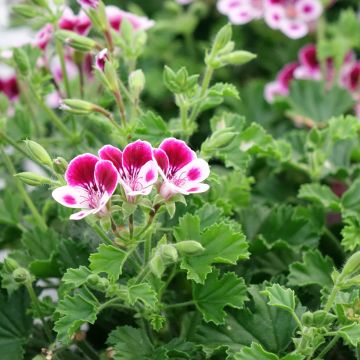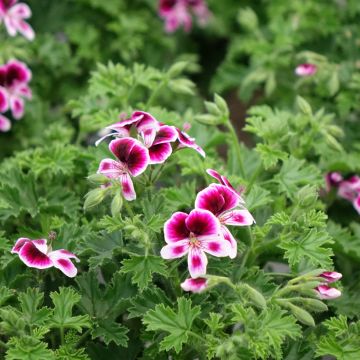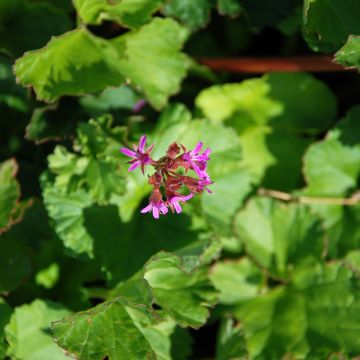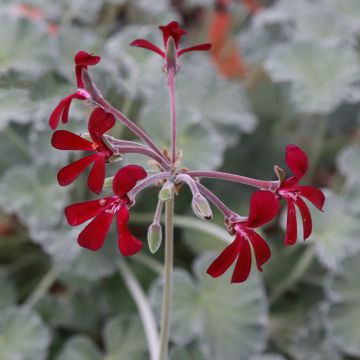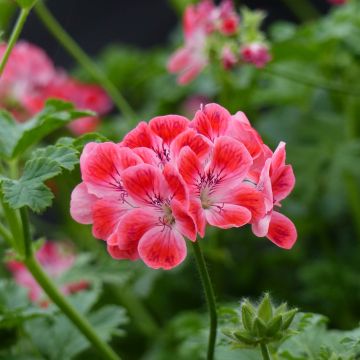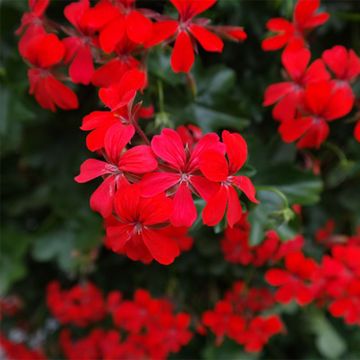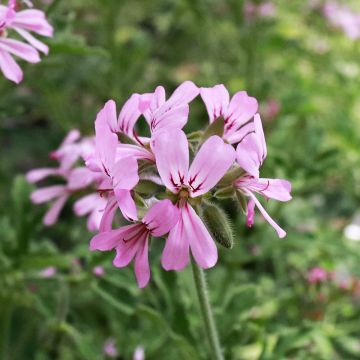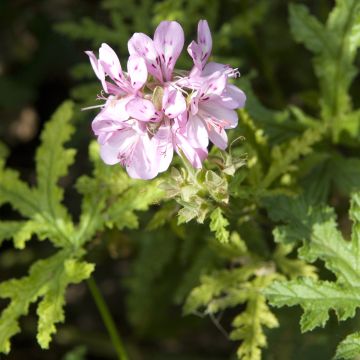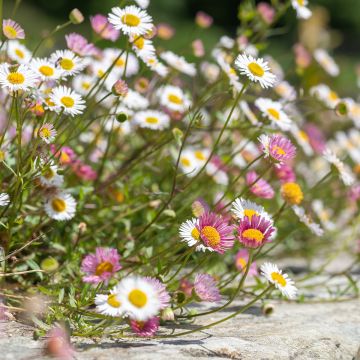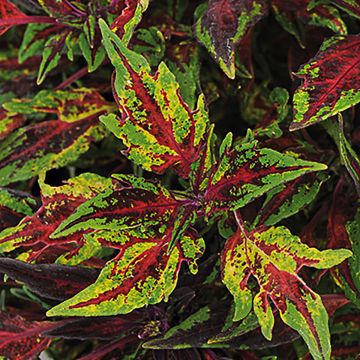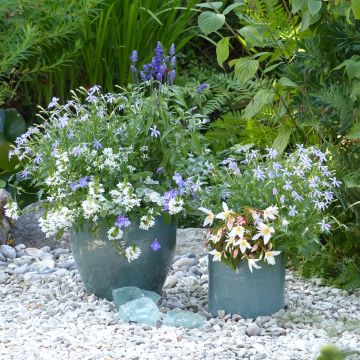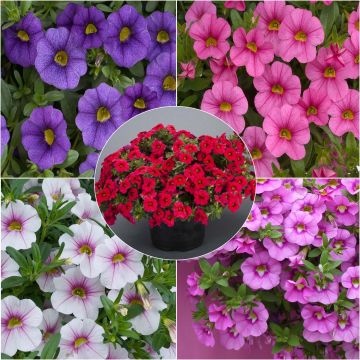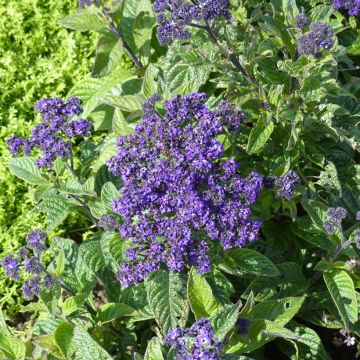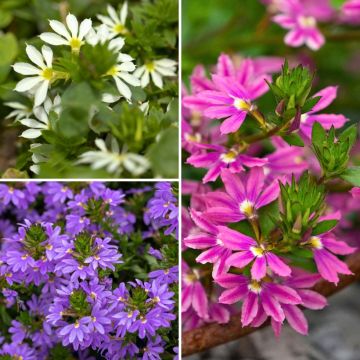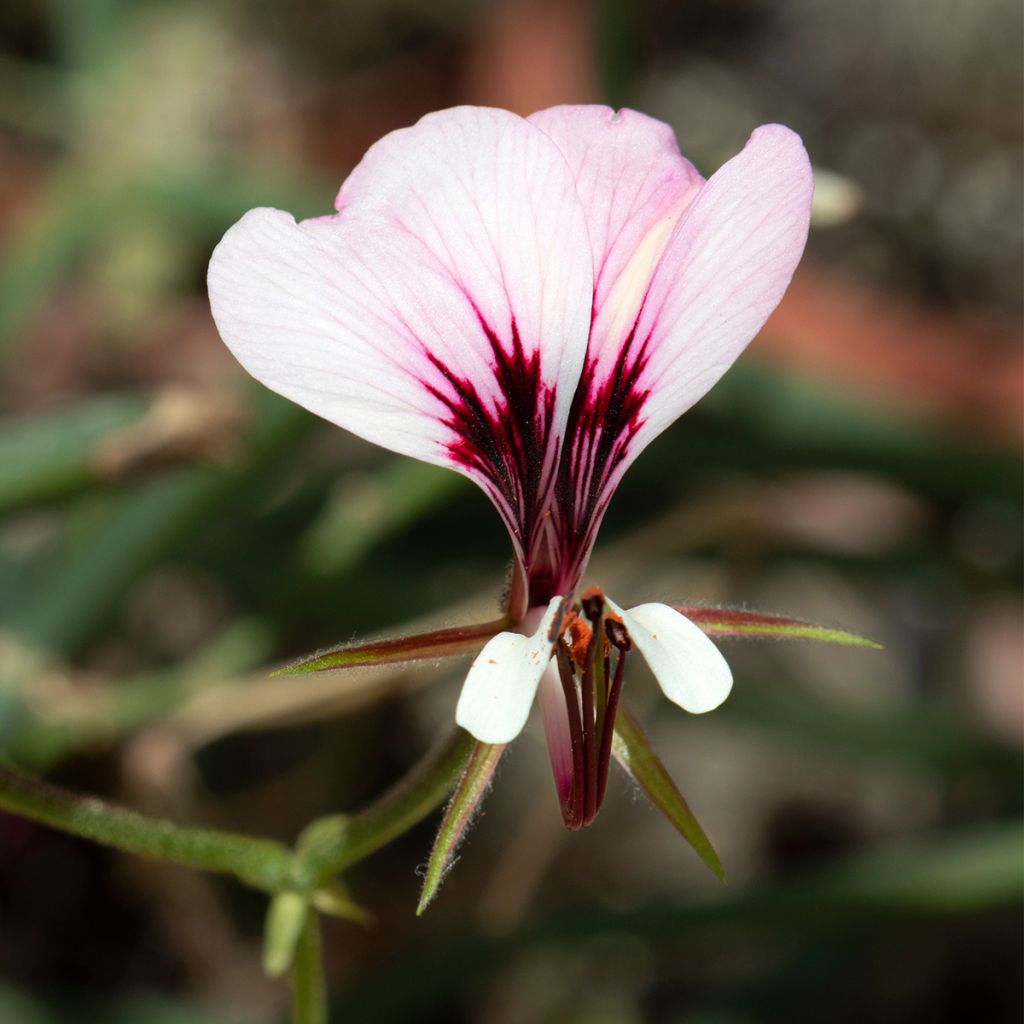

Pelargonium tetragonum - Géranium botanique
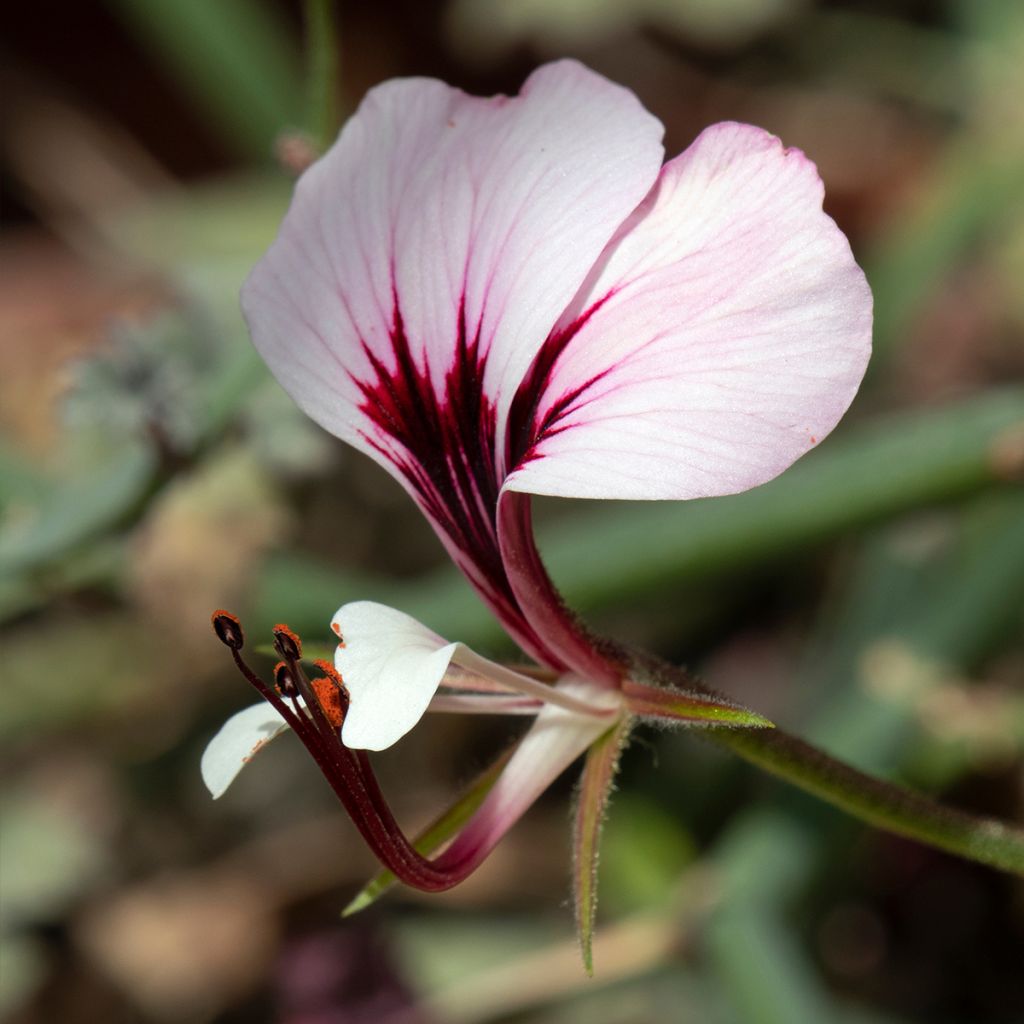

Pelargonium tetragonum - Géranium botanique
Pelargonium tetragonum
Pelargonium tetragonum
Square-stalked geranium, Square-stack cranesbill
Special offer!
Receive a €20 voucher for any order over €90 (excluding delivery costs, credit notes, and plastic-free options)!
1- Add your favorite plants to your cart.
2- Once you have reached €90, confirm your order (you can even choose the delivery date!).
3- As soon as your order is shipped, you will receive an email containing your voucher code, valid for 3 months (90 days).
Your voucher is unique and can only be used once, for any order with a minimum value of €20, excluding delivery costs.
Can be combined with other current offers, non-divisible and non-refundable.
Why not try an alternative variety in stock?
View all →This plant carries a 6 months recovery warranty
More information
We guarantee the quality of our plants for a full growing cycle, and will replace at our expense any plant that fails to recover under normal climatic and planting conditions.
Would this plant suit my garden?
Set up your Plantfit profile →
Description
Pelargonium tetragonum, also known as the square-stalked geranium, is a botanical species that is rare in cultivation. It grows in very dry environments in South Africa. This perennial plant is a beautiful curiosity. It produces succulent, jointed, angular stems that trail on the ground or support themselves on neighbouring plants in nature. Its foliage is aromatic. Its tiny spring flowers are white with red markings. It requires plenty of sun and well-drained, dry soil in summer. Outside mild regions, it should be grown in a pot to protect it from humidity and cold.
Pelargonium tetragonum is endemic to a small region in southwestern South Africa, ranging from Worcester to Grahamstown. It is a perennial plant belonging to the Geraniaceae family, like all geraniums and pelargoniums. Branches emerge from the stump to form a loosely dense mass about 1.8 to 2m (6 to 7ft) wide or tall. These branches are fleshy, smooth, and brittle, composed of square or triangular segments that are sometimes lobed. The foliage remains evergreen from autumn to the end of spring, becoming somewhat deciduous in summer when the plant enters a period of rest. The soil should be dry during the resting period. The medium green leaves are palmate and divided into 5 lobes. They are sometimes marbled with reddish tones. This foliage is quite soft to the touch. It is equipped with glandular hairs that secrete an aromatic essential oil. When touched or crushed, the leaves emit a resinous and camphor-like fragrance. Flowering occurs between March and June, depending on the climate. To induce flowering, the plant needs sufficient sunlight and a respected summer rest period. The flowers are small and delicate, grouped in pairs. They range from light pink to creamy-white in colour. They often have 4 to 5 petals, with the upper 2 petals being larger and veined with red.
Pelargonium tetragonum is a collector's plant reserved for experienced gardeners. It can be planted in a sunny rockery in mild coastal gardens, sheltered from wind and foot traffic, where it will find a favourable climate. Elsewhere, cultivation in pots is possible, but it requires some skill: respecting the biological rhythm of this species is essential to see it bloom and thrive for several years. It is a frost-sensitive pelargonium that perishes below -3°C (26.6°F).
Report an error about the product description
Pelargonium tetragonum in pictures


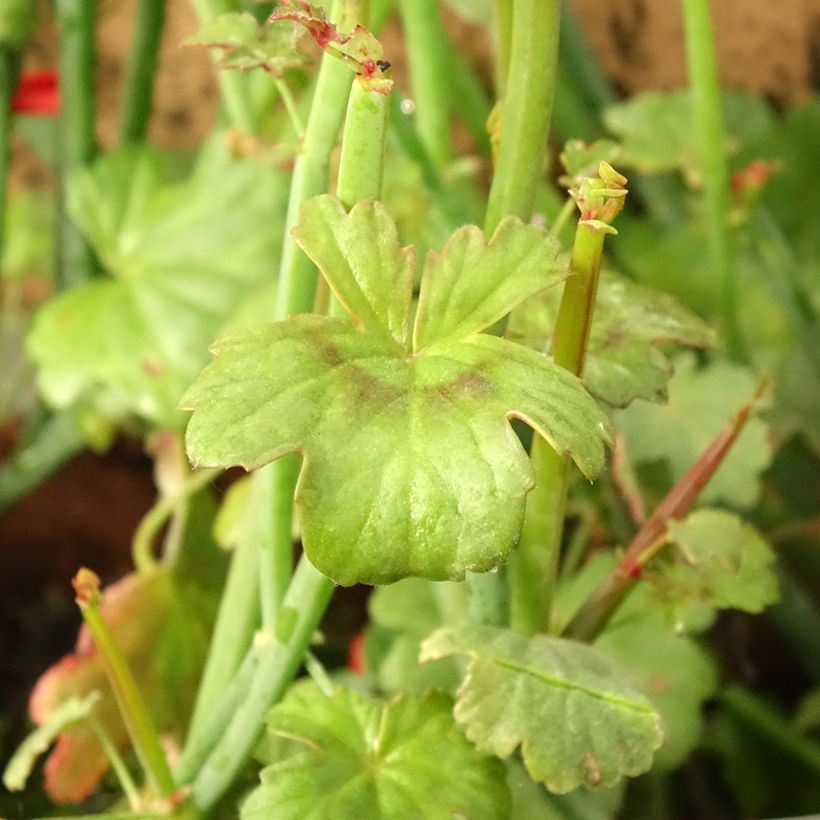

Flowering
Foliage
Plant habit
Botanical data
Pelargonium
tetragonum
Geraniaceae
Square-stalked geranium, Square-stack cranesbill
South Africa
Other Pelargonium - Geranium
View all →Planting and care
In mild, coastal climates, it can be planted in open ground or in a rockery. It prefers a sunny or slightly shaded location between 2pm and 5pm. As its stems are brittle, choose a sheltered spot away from wind and foot traffic. Once well rooted, it will do without watering in summer: its drought resistance is excellent. Limestone soils are well tolerated.
Elsewhere, plant it in a pot that you can be placed in a protected position. Take it out in May. Overwinter it at the beginning of October. Indoors, it will need at least 5 hours of sunlight per day. Fragrant geraniums require well-drained soil, but not necessarily very rich. In a pot, regular watering is necessary in summer, but sparingly to avoid rotting the roots or stems. You can keep your geraniums by bringing them inside a veranda or a cold greenhouse in winter. They can tolerate light frost, but will not survive winter in the garden, except by the seaside.
Planting period
Intended location
Care
This item has not been reviewed yet - be the first to leave a review about it.
Similar products
Haven't found what you were looking for?
Hardiness is the lowest winter temperature a plant can endure without suffering serious damage or even dying. However, hardiness is affected by location (a sheltered area, such as a patio), protection (winter cover) and soil type (hardiness is improved by well-drained soil).

Photo Sharing Terms & Conditions
In order to encourage gardeners to interact and share their experiences, Promesse de fleurs offers various media enabling content to be uploaded onto its Site - in particular via the ‘Photo sharing’ module.
The User agrees to refrain from:
- Posting any content that is illegal, prejudicial, insulting, racist, inciteful to hatred, revisionist, contrary to public decency, that infringes on privacy or on the privacy rights of third parties, in particular the publicity rights of persons and goods, intellectual property rights, or the right to privacy.
- Submitting content on behalf of a third party;
- Impersonate the identity of a third party and/or publish any personal information about a third party;
In general, the User undertakes to refrain from any unethical behaviour.
All Content (in particular text, comments, files, images, photos, videos, creative works, etc.), which may be subject to property or intellectual property rights, image or other private rights, shall remain the property of the User, subject to the limited rights granted by the terms of the licence granted by Promesse de fleurs as stated below. Users are at liberty to publish or not to publish such Content on the Site, notably via the ‘Photo Sharing’ facility, and accept that this Content shall be made public and freely accessible, notably on the Internet.
Users further acknowledge, undertake to have ,and guarantee that they hold all necessary rights and permissions to publish such material on the Site, in particular with regard to the legislation in force pertaining to any privacy, property, intellectual property, image, or contractual rights, or rights of any other nature. By publishing such Content on the Site, Users acknowledge accepting full liability as publishers of the Content within the meaning of the law, and grant Promesse de fleurs, free of charge, an inclusive, worldwide licence for the said Content for the entire duration of its publication, including all reproduction, representation, up/downloading, displaying, performing, transmission, and storage rights.
Users also grant permission for their name to be linked to the Content and accept that this link may not always be made available.
By engaging in posting material, Users consent to their Content becoming automatically accessible on the Internet, in particular on other sites and/or blogs and/or web pages of the Promesse de fleurs site, including in particular social pages and the Promesse de fleurs catalogue.
Users may secure the removal of entrusted content free of charge by issuing a simple request via our contact form.
The flowering period indicated on our website applies to countries and regions located in USDA zone 8 (France, the United Kingdom, Ireland, the Netherlands, etc.)
It will vary according to where you live:
- In zones 9 to 10 (Italy, Spain, Greece, etc.), flowering will occur about 2 to 4 weeks earlier.
- In zones 6 to 7 (Germany, Poland, Slovenia, and lower mountainous regions), flowering will be delayed by 2 to 3 weeks.
- In zone 5 (Central Europe, Scandinavia), blooming will be delayed by 3 to 5 weeks.
In temperate climates, pruning of spring-flowering shrubs (forsythia, spireas, etc.) should be done just after flowering.
Pruning of summer-flowering shrubs (Indian Lilac, Perovskia, etc.) can be done in winter or spring.
In cold regions as well as with frost-sensitive plants, avoid pruning too early when severe frosts may still occur.
The planting period indicated on our website applies to countries and regions located in USDA zone 8 (France, United Kingdom, Ireland, Netherlands).
It will vary according to where you live:
- In Mediterranean zones (Marseille, Madrid, Milan, etc.), autumn and winter are the best planting periods.
- In continental zones (Strasbourg, Munich, Vienna, etc.), delay planting by 2 to 3 weeks in spring and bring it forward by 2 to 4 weeks in autumn.
- In mountainous regions (the Alps, Pyrenees, Carpathians, etc.), it is best to plant in late spring (May-June) or late summer (August-September).
The harvesting period indicated on our website applies to countries and regions in USDA zone 8 (France, England, Ireland, the Netherlands).
In colder areas (Scandinavia, Poland, Austria...) fruit and vegetable harvests are likely to be delayed by 3-4 weeks.
In warmer areas (Italy, Spain, Greece, etc.), harvesting will probably take place earlier, depending on weather conditions.
The sowing periods indicated on our website apply to countries and regions within USDA Zone 8 (France, UK, Ireland, Netherlands).
In colder areas (Scandinavia, Poland, Austria...), delay any outdoor sowing by 3-4 weeks, or sow under glass.
In warmer climes (Italy, Spain, Greece, etc.), bring outdoor sowing forward by a few weeks.































